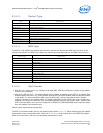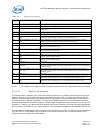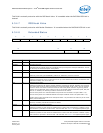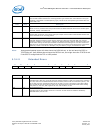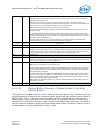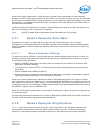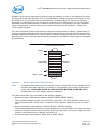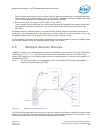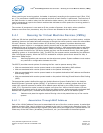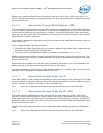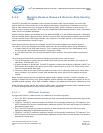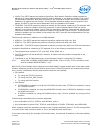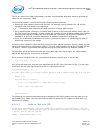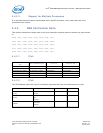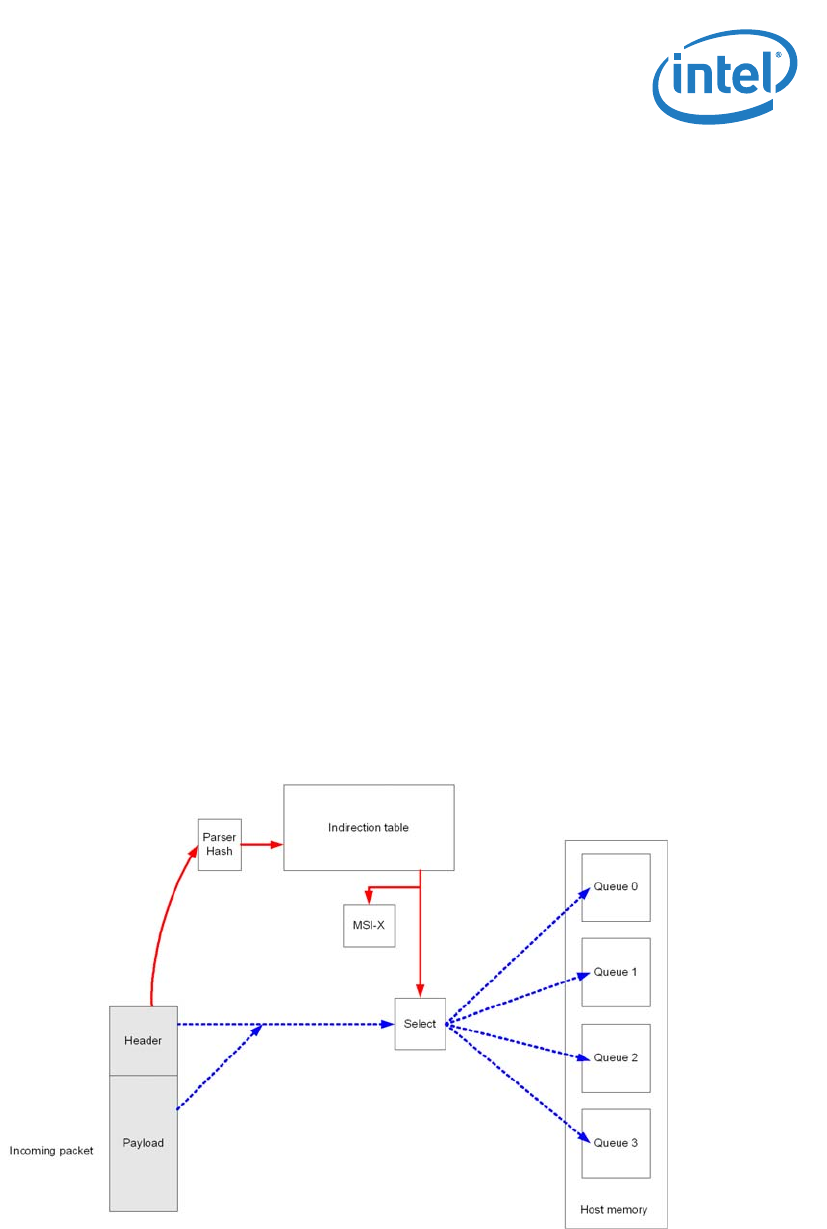
Multiple Receive Queues — Intel
®
82575EB Gigabit Ethernet Controller
324632-003 Intel
®
82575EB Gigabit Ethernet Controller
Revision: 2.1 Software Developer’s Manual and EEPROM Guide
January 2011 119
These registers hold a value that is an offset from the base and indicates the in-progress descriptor.
There can be up to 8 KB descriptors in the circular buffer. Hardware maintains a shadow copy that
includes those descriptors completed but not yet stored in memory.
• Receive Descriptor Tail registers (RDT0, RDT1, RDT2, RDT3)
These registers hold a value that is an offset from the base and identifies the location beyond the
last descriptor hardware can process. This is the location where software writes the first new
descriptor.
If software statically allocates buffers, and uses memory read to check for completed descriptors, it
simply has to zero the status byte in the descriptor to make it ready for re-use by hardware. This is not
a hardware requirement, but is necessary for performing an in-memory scan.
All the registers controlling the descriptor rings behavior should be set before receive is enabled, apart
from the tail registers which are used during the regular flow of data.
5.4 Multiple Receive Queues
The 82575 supports four receive descriptor Queues organized in ring structures. The ring functionality
is described in Section 5.3.8. The four receive queues are intended for use with the Receive Side
Scaling (RSS) algorithm. The following figure shows the implementation of multiple receive queues in
connection with RSS.
Note: For more information on manageability, refer to the 82575 TCO/System Manageability
Interface Application Note (AP-495).
Figure 4. Multiple Queues in Receive
First, the software application stores into the indirection table a set of values, enabling pre-determined
indirection of incoming packets to specific queues, each queue being dedicated to one processor. This
enables load balancing of multiple connections among the processors.



